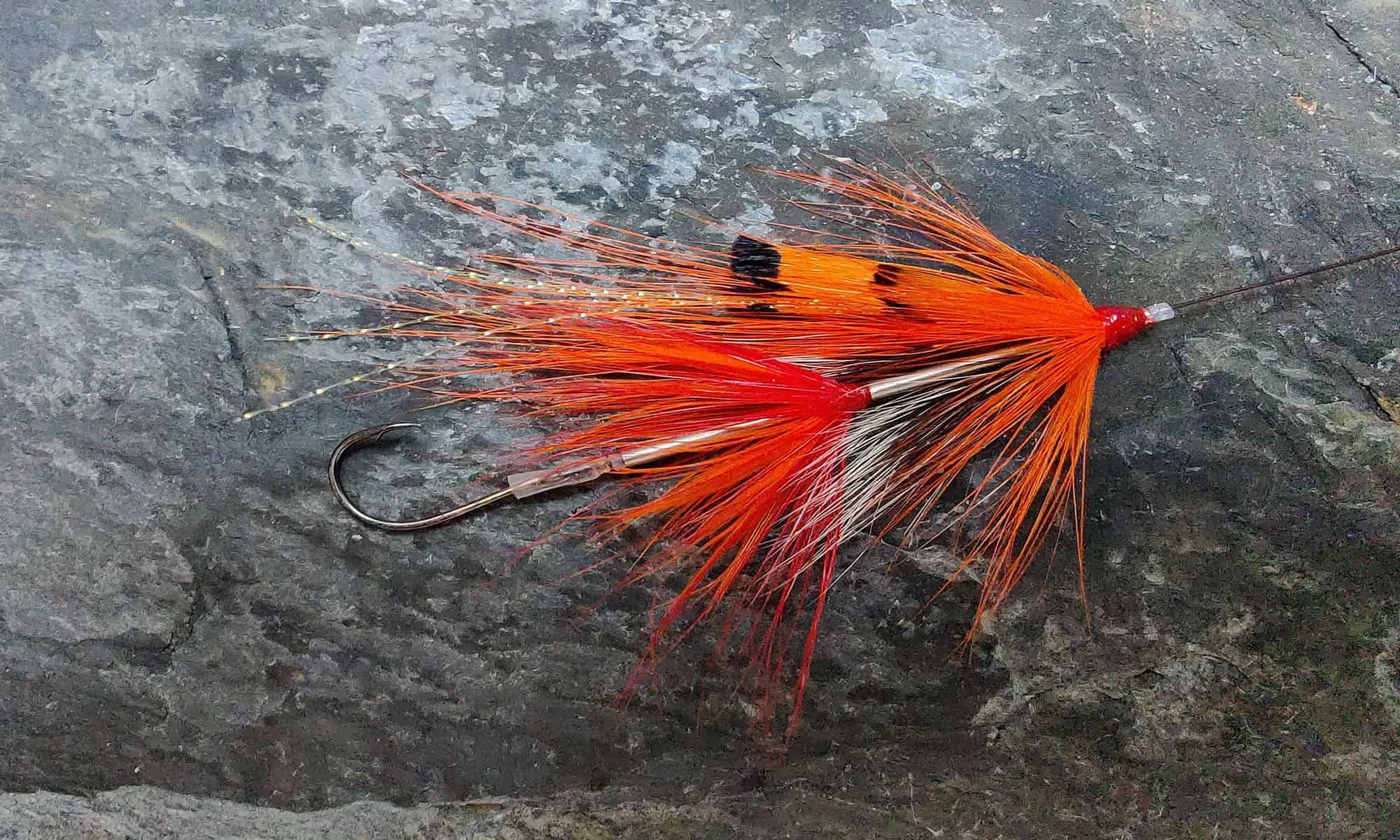Scottish Intruder Fly Patterns dressed on Needle Tubes
Intruder flies have proven very effective for salmon and steelhead fly fishing in the Pacific North West, where they originated. The style of tying is becoming popular also on European rivers, for Atlantic salmon and sea trout. Renowned Scottish salmon fly patterns might be readily adapted to the Intruder style of dressing, which traditionally involves dressing the fly on a wire shank, such as a Waddington shank, with the hook trailing behind, linked to the shank by means of a wire or nylon loop. I must say that, although this method of tying looks quite attractive and undoubtedly catches fish, I have found their dressing quite tricky.
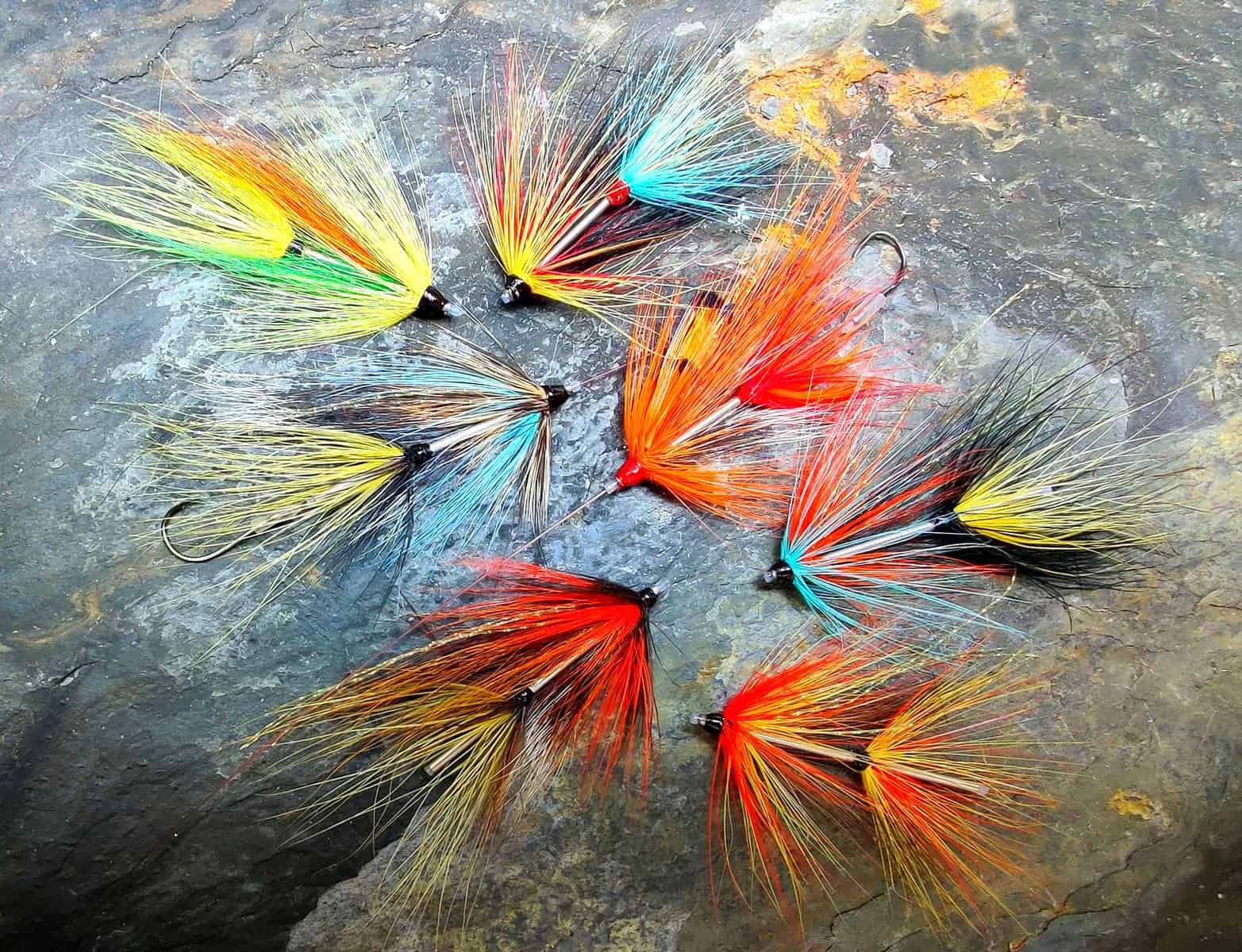
As an alternative, I find it much easier to dress the Intruder style of fly on a tube. Below I illustrate a few examples of famous traditional Scottish salmon flies dressed in the Intruder style on stainless steel needle tubes. The tubes shown are 30 to 40mm in length and 1.5mm in diameter, allowing a finished fly as slim as one dressed on a Waddington shank and about the same weight. The advantages the needle tube has over the Waddington shank in tying Intruders are:
- They are much more easily dressed
- The hook is more easily fitted and changed when damaged
- The shiny polished body of the slim stainless tube requires no body dressing
- The tube can slide up the line when a fish is hooked with less damage to the fly
Scottish Salmon Intruders
Shown below are a few Scottish Intruder Tube Flies, famous traditional salmon fly patterns adapted and simpified, dressed on ultra-slim stainless steel Needle Tubes in the Intruder style.
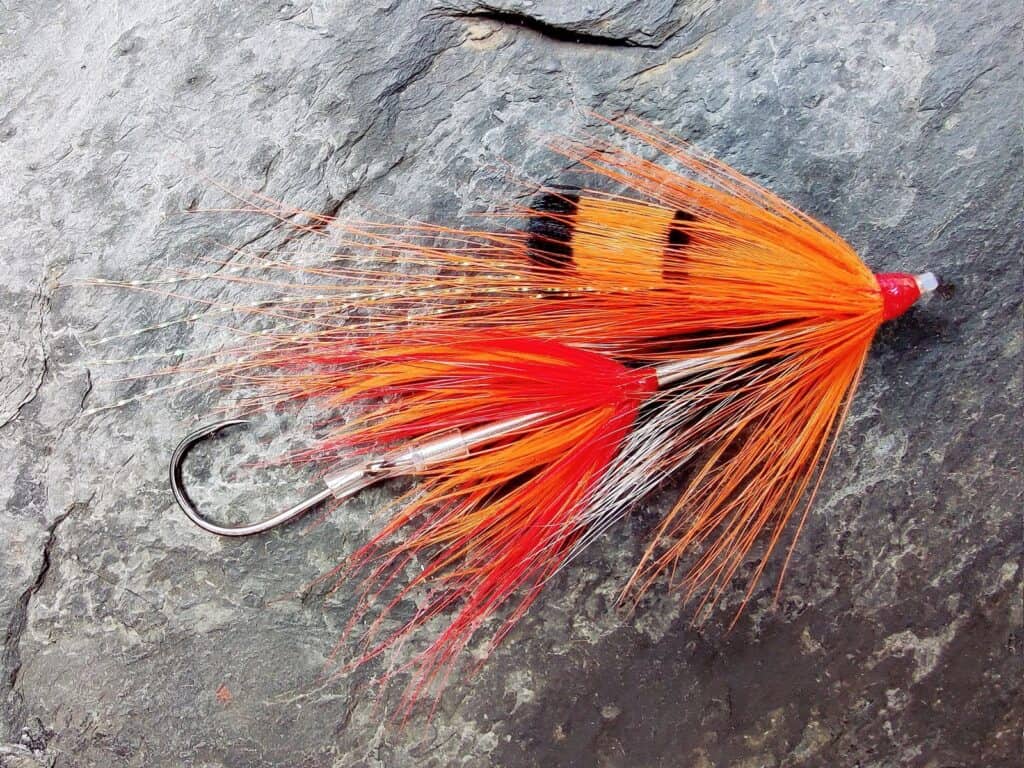
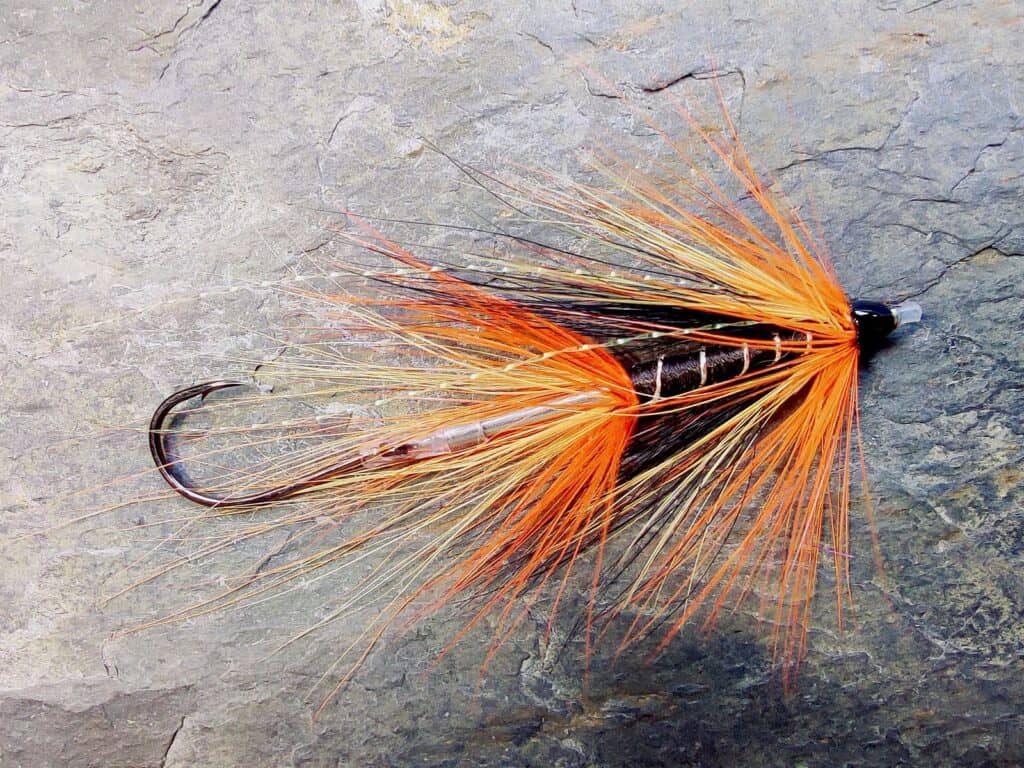
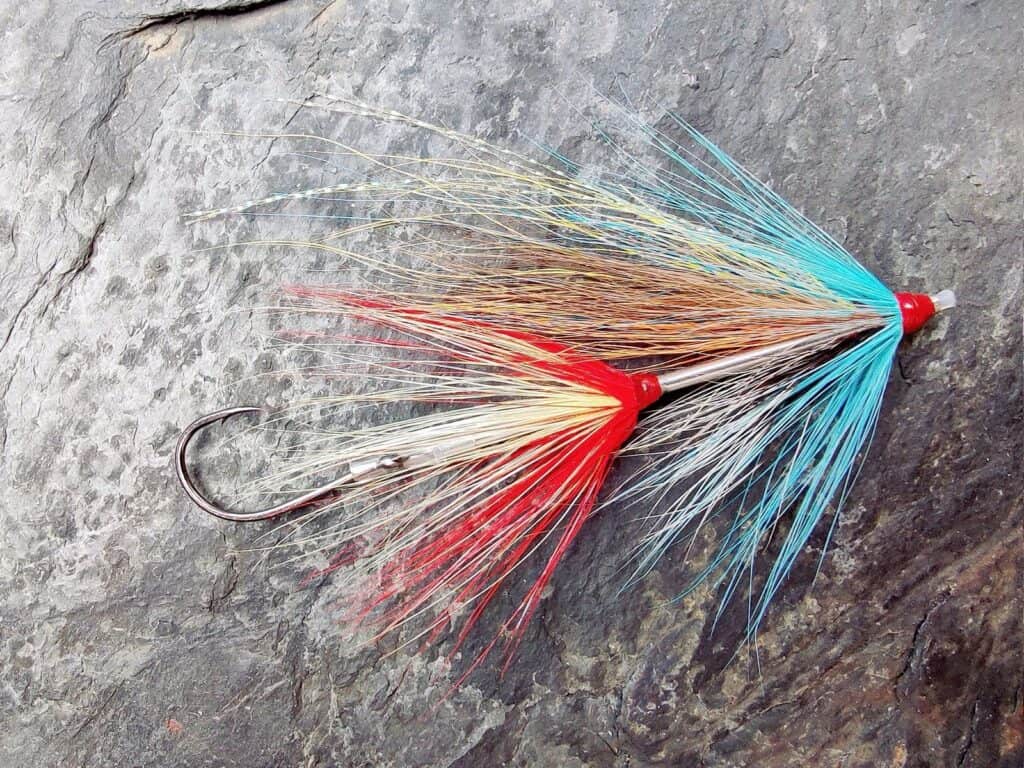
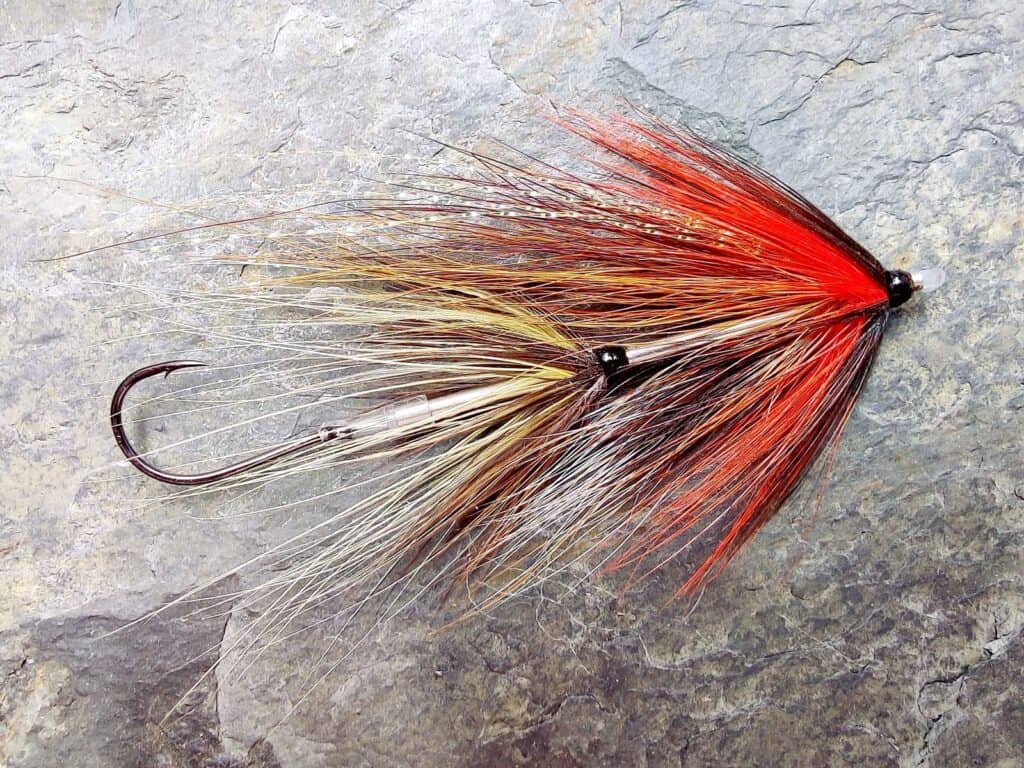
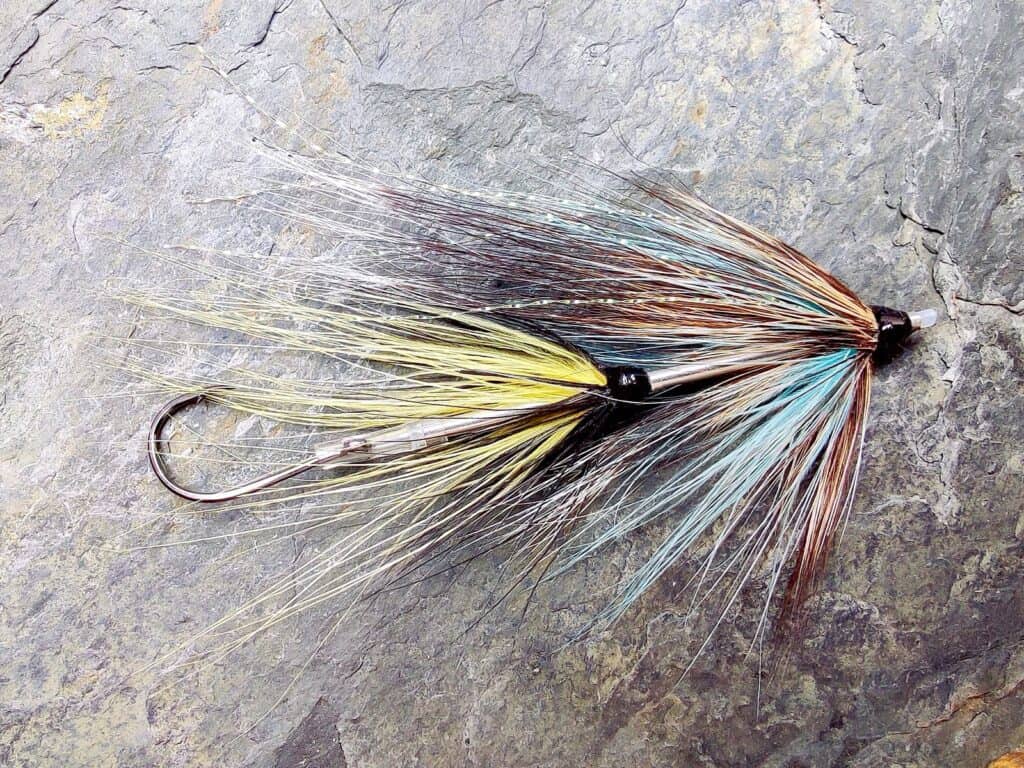
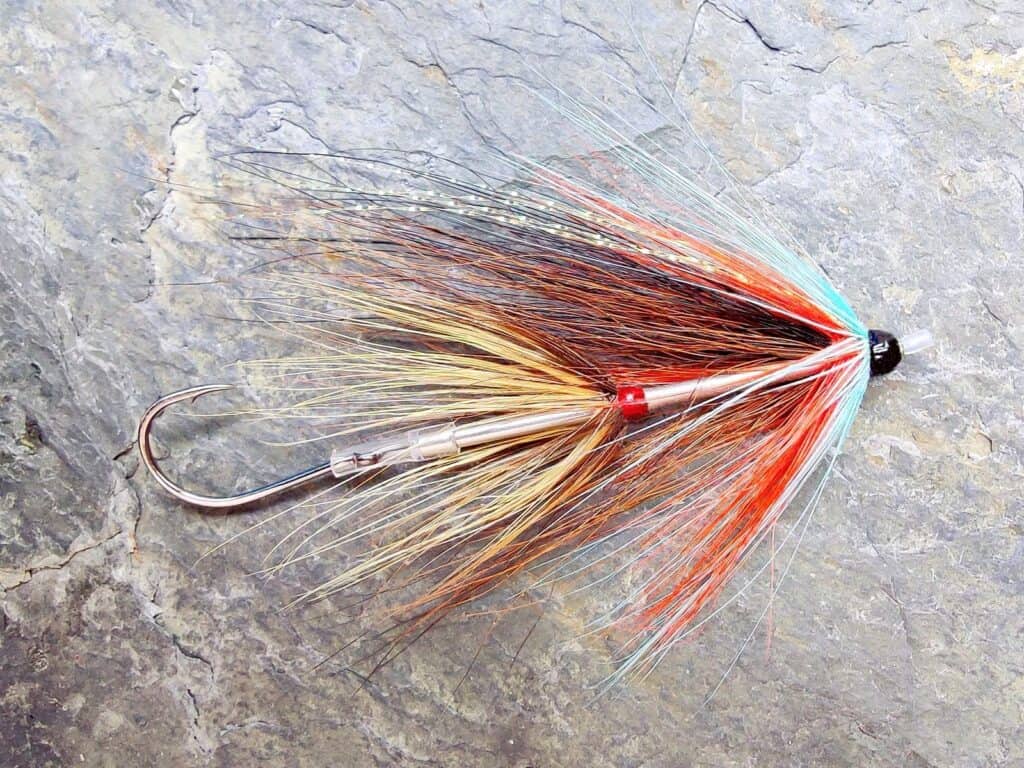
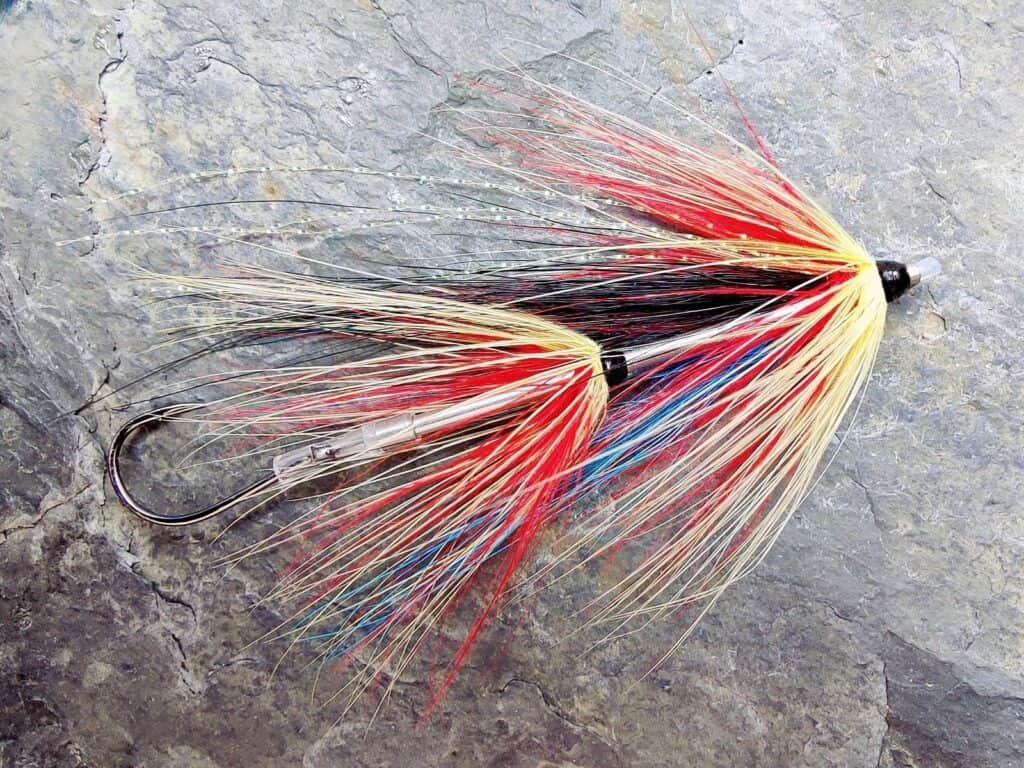
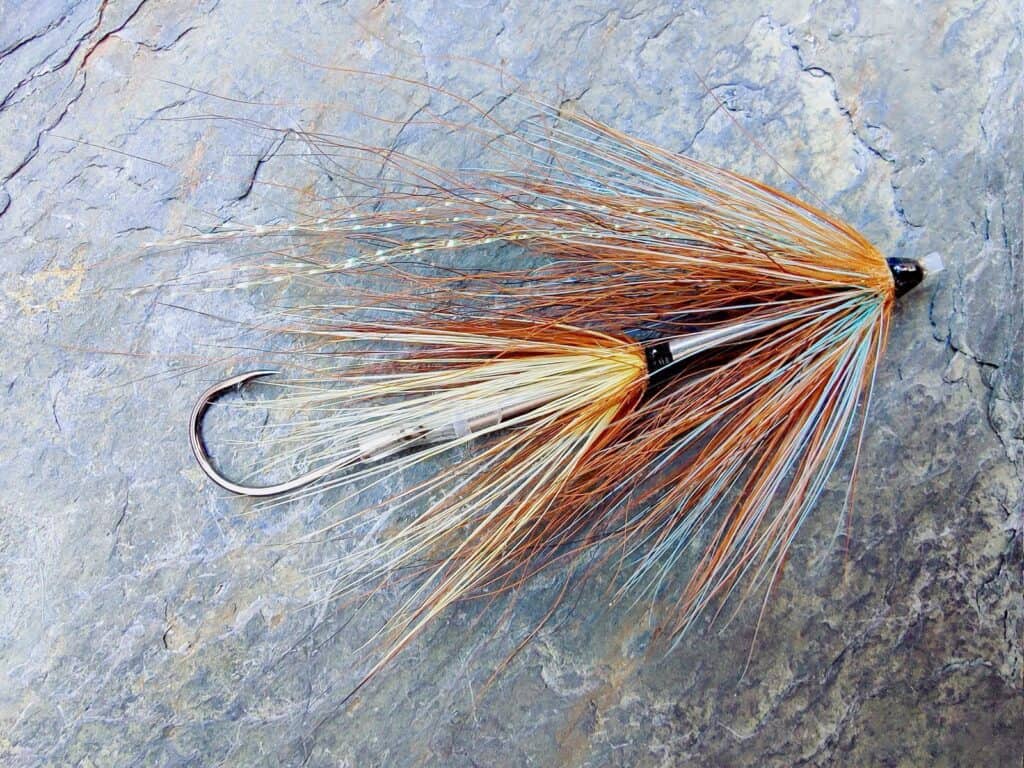
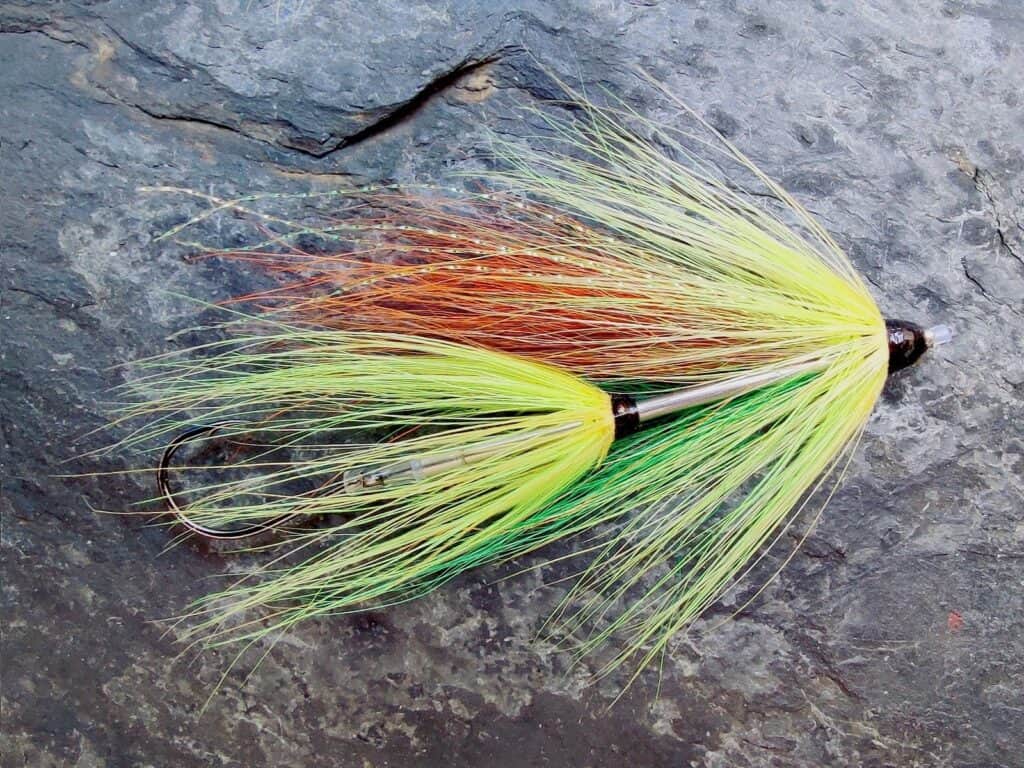
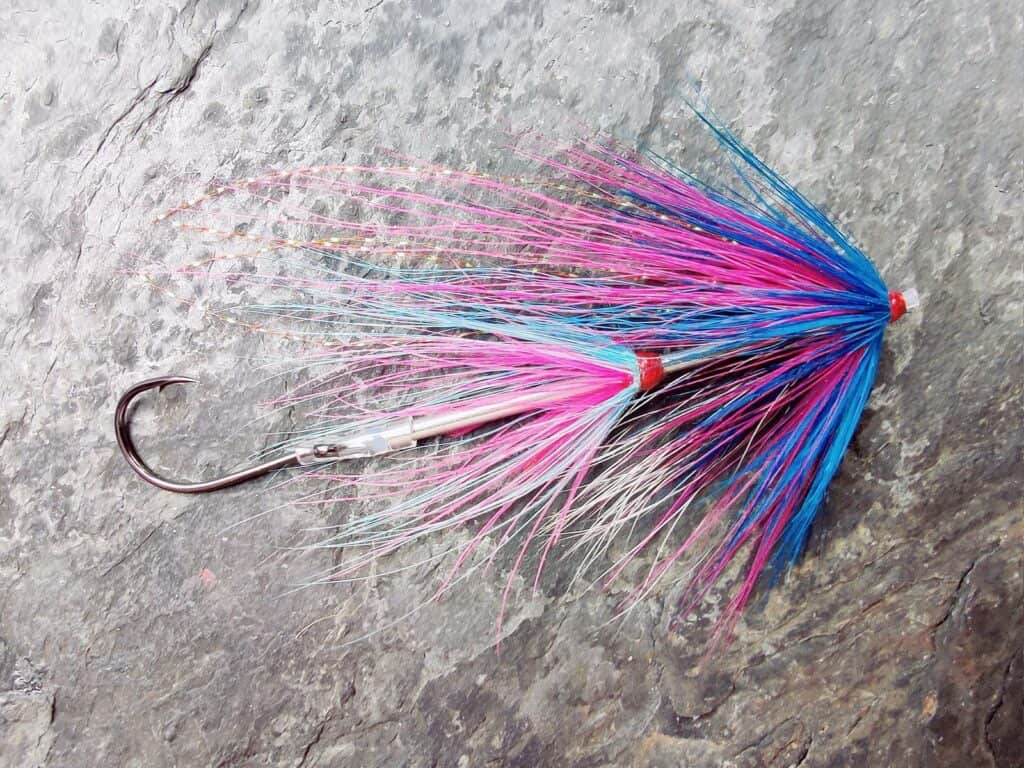
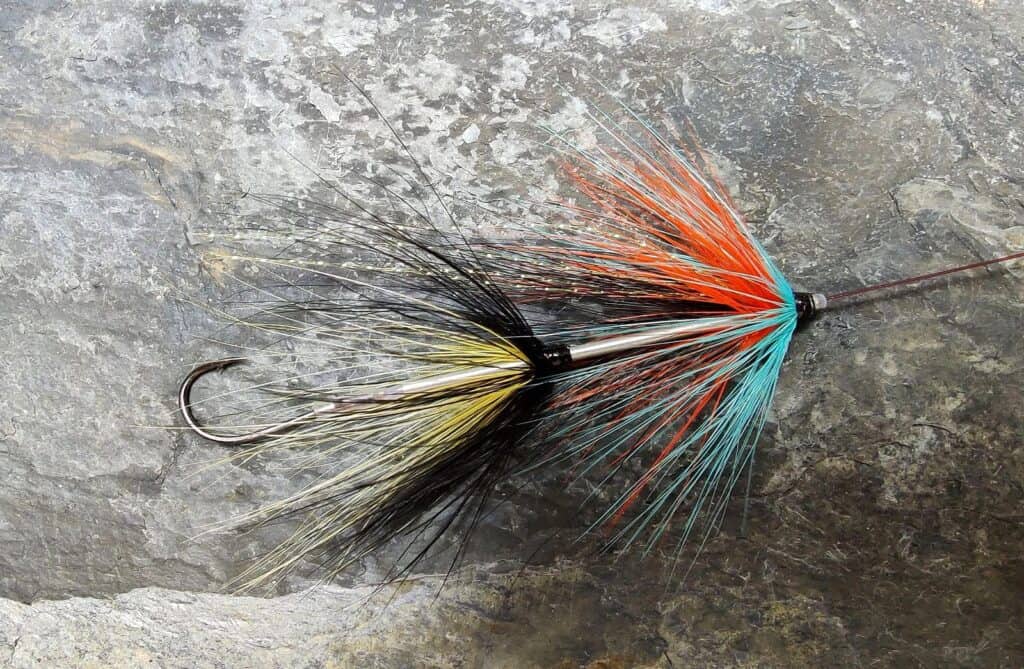
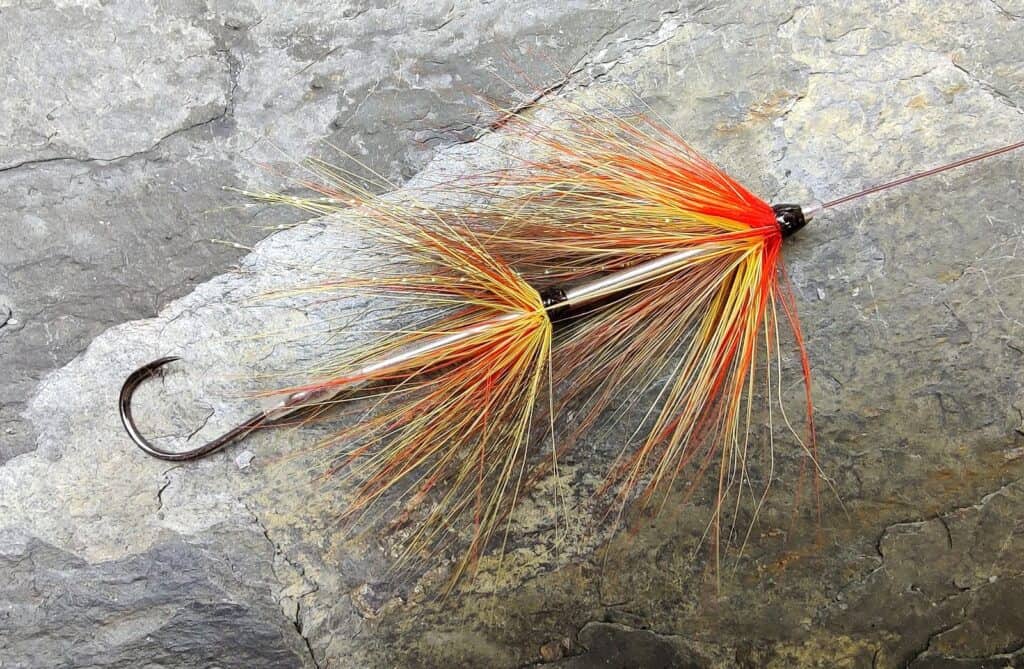
The patterns above have been much simplified. For example, most have no body dressing applied to the stainless steel needle tube. If desired, to be truer to the original classic salmon fly patterns, a body dresing might be applied, particularly to the front half of the tube, as in the Cascade Intruder Fly above. Many other successful traditional salmon fly patterns might be similarly adapted in the Intruder style, or entirely new patterns might be created according to the tyer’s preferences and fancies. Materials and colours may be mixed ad infinitum, limited only by the fly tyer’s imagination.
